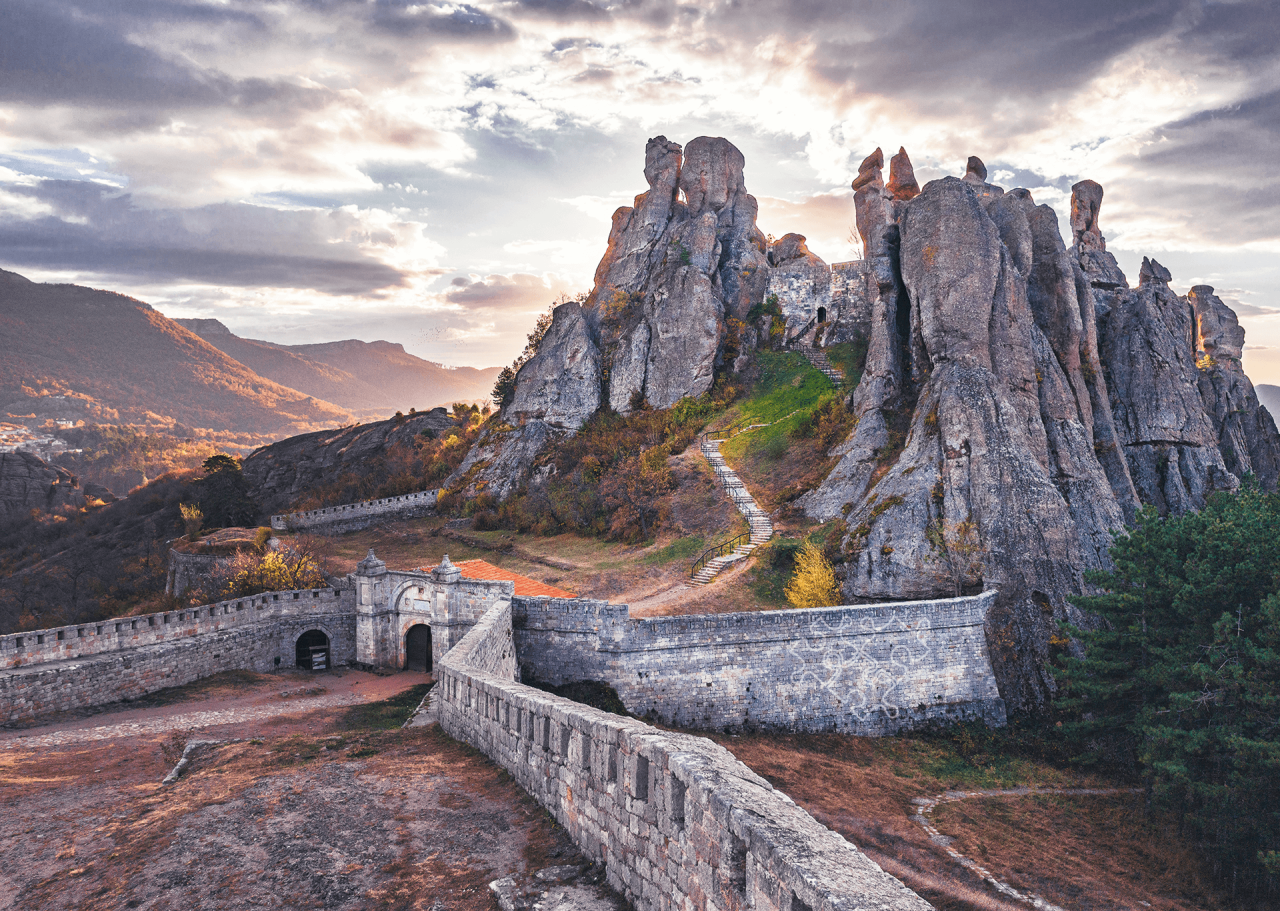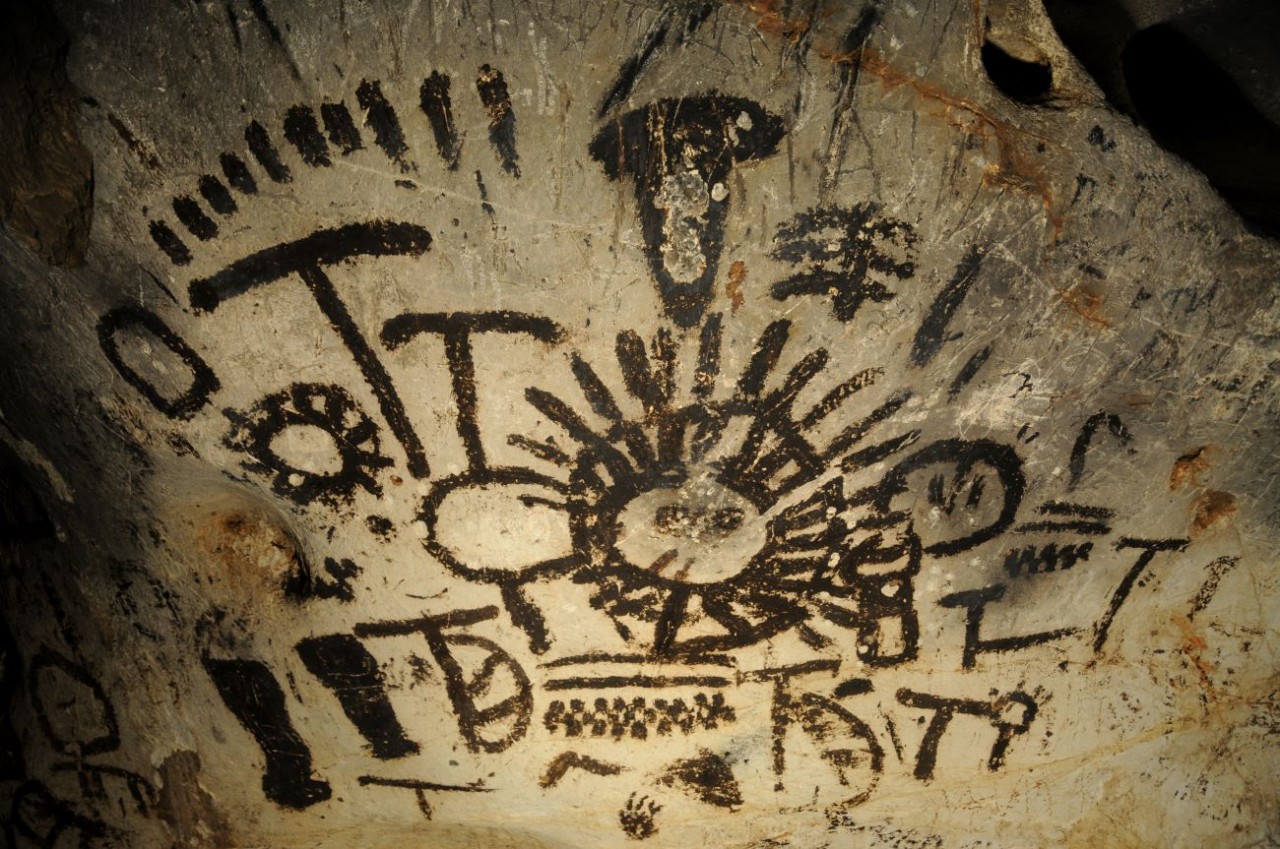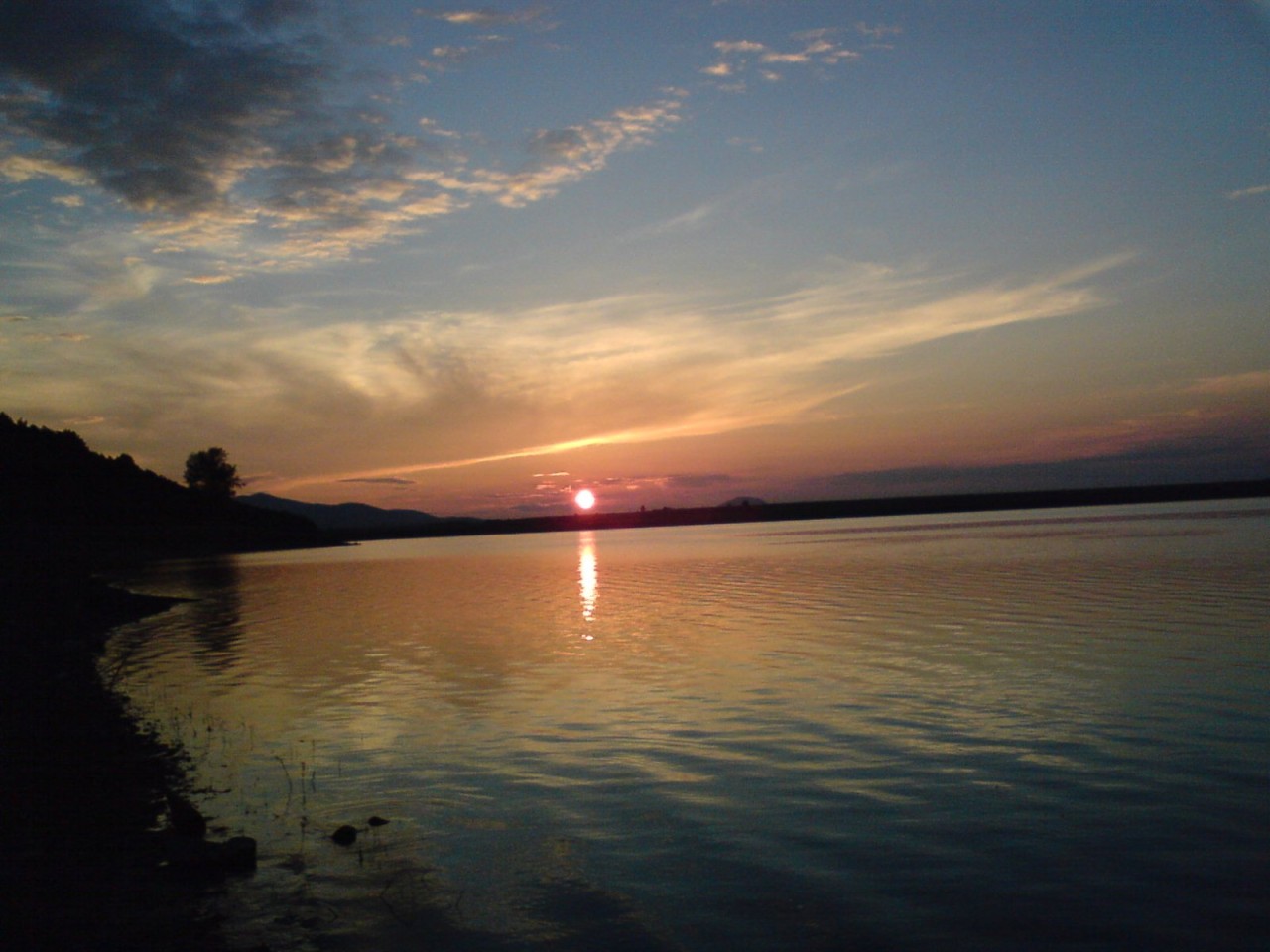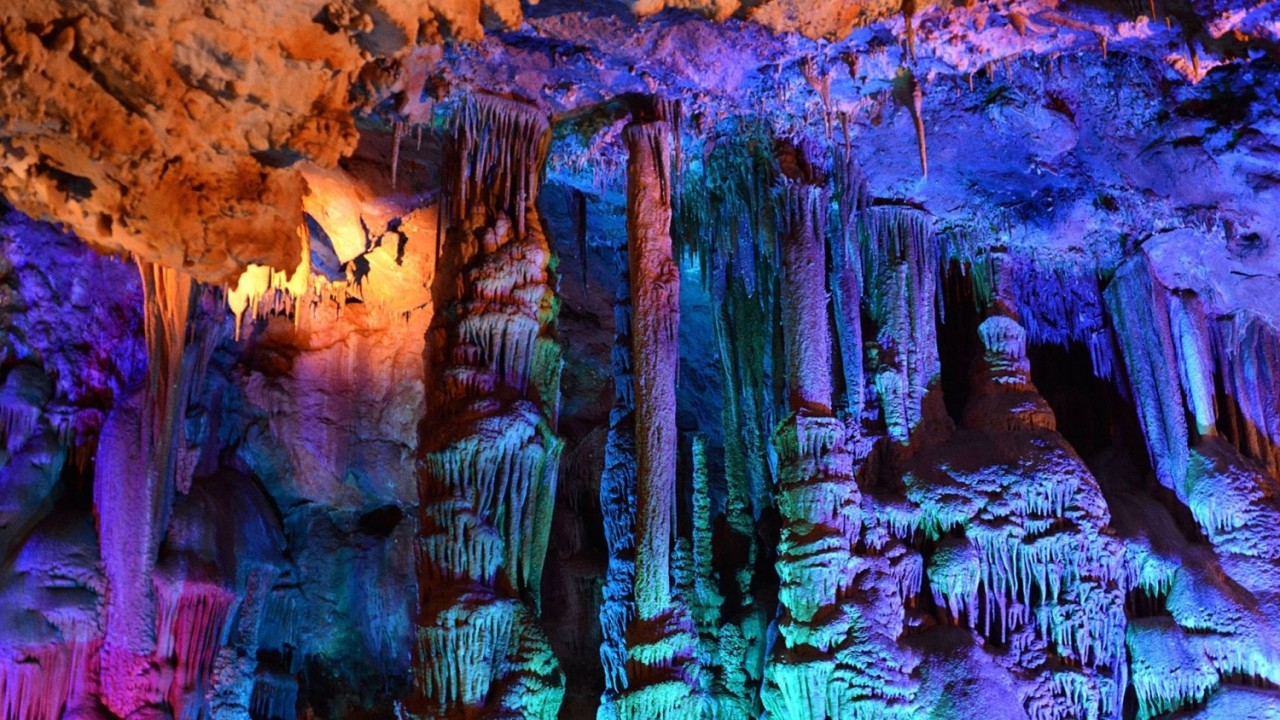SOFIA - BELOGRADCHIK ROCKS - RABISHA LAKE - MAGURA AND VENETSA CAVES - FULL-DAY TOUR BY CAR AND A DRIVER
The most beautiful natural phenomena of Bulgaria
Details
The Belogradchik Rocks
The rocks of Belogradchik are exceptionally beautiful and exquisite nature phenomena, unique to the Balkans and an important feature in Europe, and a candidate for UNESCO. The rock figures are remarkably varied and picturesque. They are astonishing, not only with their age of over 230 million years, but also with the dozens of legends for the bizarre natural forms named after many of the rock formations. Examples include The Madonna, The Monks, The Horseman; The School girl, The Dervish, The Bear, Adam and Eva, The Fortress, The Cuckoo, The Leo, The Camel, Orpheus, and the petrified wedding procession, as well as many others. For millions of years, nature has molded these rock sculptures of mythical creatures, people, animals, and different objects.
See more...
The prevailing reddish color of the rocks is due to the ferrous oxides and hydroxides. In the sandy and calcareous rocks, more than 100 caves have been developed.
The rock formations create a natural fortress with a high defensive potential that has been used by humans for ages. Between the first and third centuries, Romans built their first fortress here. This site was reconstructed and enlarged in 1805-1837 for the last time and the fortt has been preserved in this form until now.
Special historic and educational value has also the cool mining gallery in the property, which is the first of its kind in Bulgaria.
See less...
The prevailing reddish color of the rocks is due to the ferrous oxides and hydroxides. In the sandy and calcareous rocks, more than 100 caves have been developed.
The rock formations create a natural fortress with a high defensive potential that has been used by humans for ages. Between the first and third centuries, Romans built their first fortress here. This site was reconstructed and enlarged in 1805-1837 for the last time and the fortt has been preserved in this form until now.
Special historic and educational value has also the cool mining gallery in the property, which is the first of its kind in Bulgaria.
See less...
The Magura Cave
The Magura Cave is one of the largest and most beautiful caves in Bulgaria with an overall length of approximately 2500 meters. The Magura Cave began to take shape about 15 million years ago. In one of the caverns, prehistoric paintings have been discovered, carved into the walls, and decorated with bat guano (droppings). The paintings depict the silhouettes of women, men dancing and hunting, people wearing masks, animals, stars, tools, and plants. The paintings date from different eras – the early Paleolithic, the Neolithic, the later Neolithic, and the beginning of the Bronze Age.
See more...
A solar calendar from the late Neolithic found there is the earliest solar calendar discovered in Europe. It is painted on the walls of the sanctuary hall and depicts 5 festivals and 366 days.
The cave offers one of the richest collections of geological formations, of all shapes and sizes – stalactites, stalagmites, columns, Geodesic formations, cave pearls, and flows of “cave milk”. The remarkable Giant Column is over 20 meters high on a 4-meter base. The Fallen Pine is another of the largest stalagmites discovered in Bulgaria’s caves, with a length of over 11 meters and a base that has a diameter of 6 meters.
The cave is used to make sparkling wine since the conditions in the cave are similar to those required to produce French champagne.
See less...
A solar calendar from the late Neolithic found there is the earliest solar calendar discovered in Europe. It is painted on the walls of the sanctuary hall and depicts 5 festivals and 366 days.
The cave offers one of the richest collections of geological formations, of all shapes and sizes – stalactites, stalagmites, columns, Geodesic formations, cave pearls, and flows of “cave milk”. The remarkable Giant Column is over 20 meters high on a 4-meter base. The Fallen Pine is another of the largest stalagmites discovered in Bulgaria’s caves, with a length of over 11 meters and a base that has a diameter of 6 meters.
The cave is used to make sparkling wine since the conditions in the cave are similar to those required to produce French champagne.
See less...
The Rabisha Lake
The Rabisha Lake (“Rabishkoto Ezero”) is the largest lake in Bulgaria’s interior. It has a tectonic origin and it was formed in the Quaternary Period, some 2,5-3 million years ago. Its depth reaches 30-40 meters. It is an endorheic lake – no rivers flow out of it. This has turned it into the object of many folk tales and legends of medieval Bulgarians who thought the lake was bottomless and was therefore the home of many scary creatures. The legend has it that a fearful monster inhabited the lake. Unlike Nessie and many other lake monsters, however, this one has been more like a minotaur. The Rabisha Lake Monster, the so-called Water Bull, has the head of a bull, the body of a giant man, and the tale of fish.
See more...
In order to keep this terrifying beast at ease, the local people would offer a sacrifice to it the most beautiful young girl in the entire region in order to buy for their safety. They would hold a procession taking the girl to Rabisha Lake where she would get on a boat together with many wonderful gifts, and would fall pray to the monster.
When the Water Bull saw her, he was so enchanted by her that instead of killing her, he fell in love. He asked his sister, who was a sorceress, for help, and with her powers, she made the beautiful girl immortal. The Water Bull took his young wife to the bottom of the lake and never came back for more prey.
The two of them are still believed to live happily down there. The Rabisha Lake is actually proven to be the home of real water monsters – gigantic wels catfish have been caught there. The largest ones reach 5 meters in length and have a weight of 350 kg. These huge fishes might have been the cause of the Water Bull legend.
See less...
In order to keep this terrifying beast at ease, the local people would offer a sacrifice to it the most beautiful young girl in the entire region in order to buy for their safety. They would hold a procession taking the girl to Rabisha Lake where she would get on a boat together with many wonderful gifts, and would fall pray to the monster.
When the Water Bull saw her, he was so enchanted by her that instead of killing her, he fell in love. He asked his sister, who was a sorceress, for help, and with her powers, she made the beautiful girl immortal. The Water Bull took his young wife to the bottom of the lake and never came back for more prey.
The two of them are still believed to live happily down there. The Rabisha Lake is actually proven to be the home of real water monsters – gigantic wels catfish have been caught there. The largest ones reach 5 meters in length and have a weight of 350 kg. These huge fishes might have been the cause of the Water Bull legend.
See less...
The Venetsa Cave
Venetsa Cave is not far away from the Belogradchik Rocks. It was discovered back in 1973 but was unveiled for visitors barely in 2015, after its full research. The colorful LED lighting brings life and magic into the glory of the cave, revealing it all to the tourist, astonished by its beauty. 5 huge halls have been revealed so far and the overall length of the corridors is some 300 m. There are corals, crystals, stalactones, stalagmites, stalactites, and the semi-precious onyx stone that forms a large number of the formations inside.
See more...
The feeling is like watching a National Geographic production on the creation of the Universe, or a Hollywood movie for aliens. A solar calendar from the late Neolithic found there is the earliest solar calendar discovered in Europe. It is painted on the walls of the sanctuary hall and depicts 5 festivals and 366 days.
The cave offers one of the richest collections of geological formations, of all shapes and sizes – stalactites, stalagmites, columns, Geodesic formations, cave pearls, and flows of “cave milk”. The remarkable Giant Column is over 20 meters high on a 4-meter base. The Fallen Pine is another of the largest stalagmites discovered in Bulgaria’s caves, with a length of over 11 meters and a base that has a diameter of 6 meters.
The cave is used to make sparkling wine since the conditions in the cave are similar to those required to produce French champagne.
See less...
The feeling is like watching a National Geographic production on the creation of the Universe, or a Hollywood movie for aliens. A solar calendar from the late Neolithic found there is the earliest solar calendar discovered in Europe. It is painted on the walls of the sanctuary hall and depicts 5 festivals and 366 days.
The cave offers one of the richest collections of geological formations, of all shapes and sizes – stalactites, stalagmites, columns, Geodesic formations, cave pearls, and flows of “cave milk”. The remarkable Giant Column is over 20 meters high on a 4-meter base. The Fallen Pine is another of the largest stalagmites discovered in Bulgaria’s caves, with a length of over 11 meters and a base that has a diameter of 6 meters.
The cave is used to make sparkling wine since the conditions in the cave are similar to those required to produce French champagne.
See less...
HIGHLIGHTS
- - Explore the breathtaking and
stunning rock formations of Belogradchik Rocks and learn about their formation
- Learn the heroic story of the nearby Belogradchik Fortress
- Enjoy the largest inland natural freshwater lake in Bulgaria
- Go into Venetsa Cave, one of the biggest, most colorful, and most beautiful caves in Bulgaria
- See the amazing stone age drawings in Magura cave
Price from:
31€
per person
31€
per person
WHAT TO EXPECT:
| Free cancellation | |
| Reserve now & Pay later | |
| Pickup included | |
| Distance: approx. 165 km in one direction | |
| Trip duration: 6-8 hours |
WHAT'S INCLUDED:
| Insurance | |
| Drinkable water | |
| Air-conditioned vehicle | |
| Fuel and parking fees | |
| Tips |
















